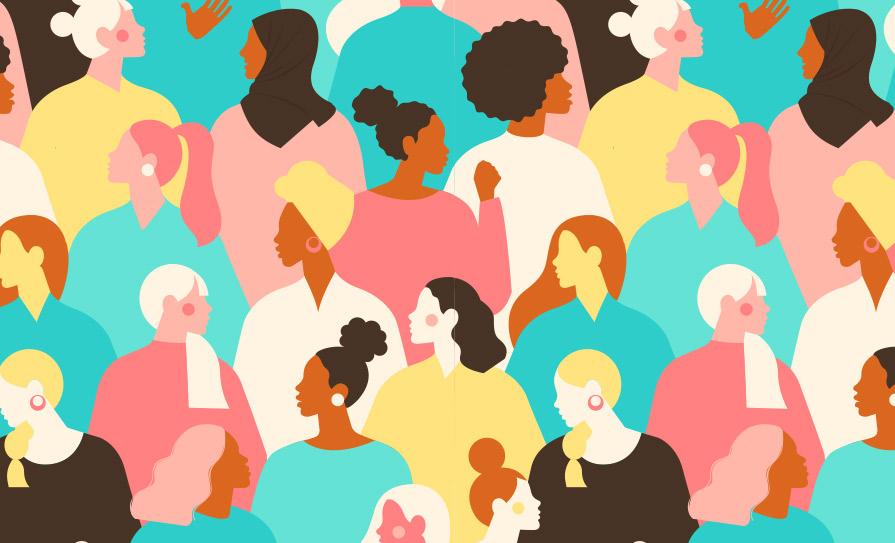
Women provide most of the care in society, and more has to be done to address the challenges they face
Inpaternational Women’s Day (IWD) in March each year, means very little to many women. You won’t read their names in the media and there won’t be any photo opportunities. Because we mostly don’t know their names. The CSO Census 2022 shows that almost 300,000 people provide regular unpaid care – the majority of whom are women. They are the nameless and wonderful mothers, sisters, and daughters who are toiling each day to keep everything going. At home, or in healthcare settings, unpaid and paid care is predominantly delivered by women.
Lots of children and young people attending health and social services have chronic health conditions and/or a disability. I meet them every day. They are cared for at home or in a combination of home and residential care, for years. Their parents’ concerns are generally rooted in how their child is, and how their family is managing. Understandably, there are deeper anxieties voiced about the care of their child in adulthood, after they can no longer care for them.
Such a challenging home life makes it difficult for the mother to climb the corporate ladder, sit on boards, travel abroad for career development, or fight for equal pay. The highest proportion of female carers is in the 30-to-59 years age bracket, which is a period where we might expect women to be networking and getting promoted. Much of the narrative around IWD is concerned with the significant battle for a woman to achieve career progression, in addition to celebrating the role of women in society today. But it does mean that the message of female empowerment can land poorly with the reality of life as a carer. It’s simply a message, which is a world away from filling out forms and chasing resources to be able to provide care.
This year, IWD had special relevance to carers due to the referendum held on the same day (8 March). Caring for a family member with a disability is relentless and tough work. Eligibility for the carer’s allowance is based on full-time care of a person with high care needs. So accessing education of more than three hours daily is not an option. Any employment in the household, which brings the family above the income threshold, can result in loss of the carers benefit. Many carers live on the poverty line because of their caring responsibilities, not because they don’t wish to go out and grab the working world by the horns. Life circumstances create a bind that leaves the long-term carer with few options, making an aspirational message about personal and professional development seem out of touch.
Respite and access to community support is extremely limited so most carers of children with high needs rely on other family members to grab a few hours’ sleep or home nursing hours sourced through charities, such as the Jack and Jill Foundation, which was set up by Jonathan Irwin when he realised how limited State support is. There is little certainty in these informal arrangements, which means they can’t be relied upon to meet a friend for coffee, never mind enrolling in a training course.
Women can undoubtably achieve in every sphere of their life. The positive message within IWD is true. They can also achieve professional qualifications and career advancement despite multiple obstacles from a young age. Dr Katriona O’Sullivan’s book Poor is the most uplifting account of one person’s fight to survive and develop that you will ever read. She luckily had help. But it shouldn’t depend on good fortune – to overcome adversity, people need help.
Most of the paid caring work is also delivered by women. In the HSE, 78 per cent of employees are women, which is approximately 110,000 women. A similar gender disparity exists in the private health sector, including nursing homes, GP practices, and community services. Yet, women working in the health service earn less on average than their male colleagues. In a HSE report on the gender pay gap, published in 2023, the pay gap was 12 per cent. This was based on average hourly remuneration. It can be partly attributed to more men in senior, high salary roles, and more men in full-time employment in the health service. Based on this gender pay gap, and the dominance of men in senior roles, it suggests that even when care is delivered outside the family, it is still relatively undervalued when it is delivered by women.
Each year, IWD should celebrate the enormous, but mostly unacknowledged, work performed by women of every age in caring for people with chronic medical conditions, disabilities, and dementia. Any campaign to bring a message of empowerment to them must be in combination with actual funded supports to help them achieve what is important to them.
Author: Dr Suzanne Crowe, Consultant in Paediatric Intensive Care Medicine, and President of the Medical Council





Leave a Reply
You must be logged in to post a comment.